In order to understand the symptoms of cervical osteochondrosis, it is useful to know a little about the anatomy of the neck. Along the spine in the neck, one of the largest blood vessels is the vertebral artery, according to which oxygen and vital nutrients come to all parts of the brain.
Osteochondrosis is caused by deformations of the intervertebral discs and cartilage with a concomitant reaction in the body of the vertebra.
With this disease, degenerative changes in the disk occur, its height decreases and the physiological functions of the discs are lost. As a result, instability and changes in the vertebral joints occur.
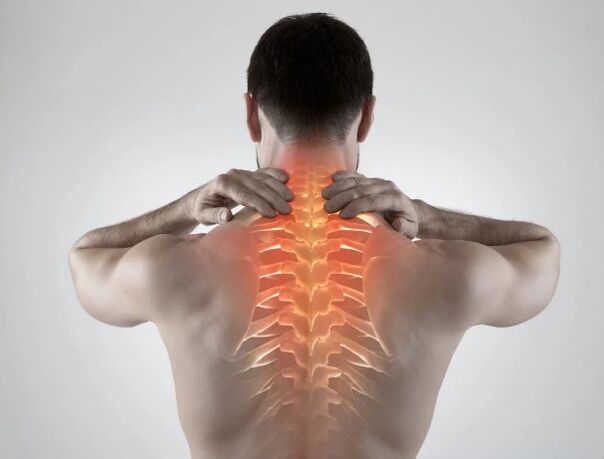
As the disease progresses, the reaction occurs in the end plate of the vertebral body, the spine is twisted, causing narrowing in the spinal canal.
In most cases, at first, cervical osteochondrosis does not cause any symptoms. With the development of the disease, the space for the spinal cord, nerve roots and the vertebral artery is narrowed. When these sensitive elements are compressed, only then the symptoms of cervical osteochondrosis begin to develop:
- pain and stiffness in the neck;
- regular dumb, squeezing headache, increasing during movement, and not passing from analgesics;
- numbness, tingling or weakness in the arms or legs;
- violation of coordination;
- dizziness;
- ringing and noise in the ears;
- memory loss;
- emotional changes;
- Violation of monitoring the work of the intestines or bladder.
With cervical osteochondrosis, depending on the cause and form of the disease, doctors recommend:
- non -steroidal anti -inflammatory drugs - reduce pain and relieve inflammation;
- Corticosteroids - prednisone helps relieve pain;
- Musorelaxants - cyclobenzaprine relieve muscle cramps in the neck;
- anticonvulsants-sometimes prescribed to dilute pain due to damaged nerves;
- antidepressants;
- Ointments - distracting and warming action, anti -inflammatory and combined.
Physiotherapy
The physiotherapist teaches patients to exercises that contribute to stretching and strengthening the muscles of the neck and shoulders. Stretching exercises, including using counterweights, expand the space inside the spine, and release nerve roots.
Regular exercises and maintenance of activity accelerates the recovery process.
Even in particularly severe cases, when the patient is unable to perform physiotherapeutic procedures on his own, soft massage helps. It can be performed at home, and it gives a real effect.
A massage rug, a whisk, a chair, a rolling pin, a bamboo broom and a self -massage tape - all these improvised means use if the patient has cervical osteochondrosis, all symptoms and treatment at home, for massage.
The basic principles of massage with cervical osteochondrosis:
- Easy exposure, power is not necessary;
- direction of movements from the spinal column;
- smoothness and soft movements;
- Massage only with fingers.
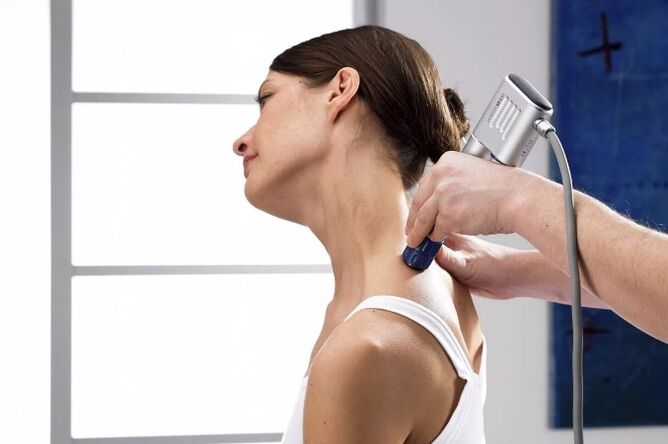
Some use banks for massage, believing that blood circulation improves in this way. The skin in front of the procedure is necessarily lubricated with massage oil or petroleum jelly, and after fastening the can, no more than seven minutes should pass to the skin.
Masseurs from ancient times use honey for their procedures.
The approximate principle is this: warm the neck with a heating pad for 15 minutes, and then apply a tablespoon of honey and gently knead the neck and shoulders until the hands begin to stick to the body.
Honey must turn white, and the skin will get sick slightly. The neck heated in this way is covered with a film and wrapped in a woolen scarf. Wash off honey only in the morning.
Folk remedies for the treatment of cervical osteochondrosis
Folk remedies cannot be written off from accounts - cervical osteochondrosis with its symptoms is treated at home using essential oils, herbs, fats, roots and poisons. They are combined with alcohols, iodine and turpentine, and quite effective anti -inflammatory and warming agents for use both external and inside are obtained.
Phythelia of cervical osteochondrosis
Means with celery. Grate celery root on the smallest grater, squeeze the juice. Take celery juice for cervical osteochondrosis, symptoms and treatment at home three times a day in a tablespoon before meals.
A less concentrated version of the drug - 1 tablespoon of juice 100 ml of boiling water, leave for a couple of hours and take the solution along a tablespoon an hour before meals 4 times a day.
You can also use the root instead of juice - pour 3 grams of root of 0. 5 liters of boiling water, insist a couple of hours to cool completely and drink 20 ml before each meal.
Laurel. In an enameled pan, pour 12 grams of bay leaf 300 ml of cold water, boil for five minutes. Let it brew for three hours, strain.
Throughout the day, between meals, drink infusion in small sips. Drink the rest before bedtime. Reception of the product continue four days, take a break for a week and repeat the course.

Compresses
The leaves of burdock and horseradish have established themselves as compresses. They are scalded with boiling water, applied to a damaged place and hold for several hours, wrapping in cotton cloth. Repeat every day 10 times. Repeat 2-4 times a year.
Cervical osteochondrosis: Is treatment at home effective?
The effect of the complex treatment of osteochondrosis of the house with the correct execution of the methods will be, often quite quickly.
The condition of the spine improves, the intervertebral discs retain integrity and shape longer. But there is one condition: the diagnosis of "cervical osteochondrosis" should be made by a qualified doctor.
Methods of treatment (including non -traditional ones) are discussed with it.
If cervical osteochondrosis with symptoms can be treated at home with rubbish, compresses, physiotherapy or plant agents, it is strictly forbidden to perform apitherapy, acupuncture, spinal stretching and deep massage houses. These techniques are used only under the supervision of a doctor.
After a week of treatment at home, symptoms of osteochondrosis should subside. If this does not happen, medical care is needed, you may urgently have an operation, and you will forget about the cervical osteochondrosis for a long time!
Before proceeding directly to the discussion of home treatment of osteochondrosis of the cervical spine, you should understand how the pathology develops in detail. Independent therapy can be carried out when a person clearly understands why the neck department is affected.
Cervical osteochondrosis: symptoms
Cervical osteochondrosis is characterized by dystrophic and degenerative processes inside the cartilage and bone tissue of the intervertebral discs and in the vertebrae themselves.
After the lumbar, it is the cervical osteochondrosis that is most common. Its specificity lies in the fact that the vertebral artery is also involved in the overwhelming of most cases in the degeneration process.
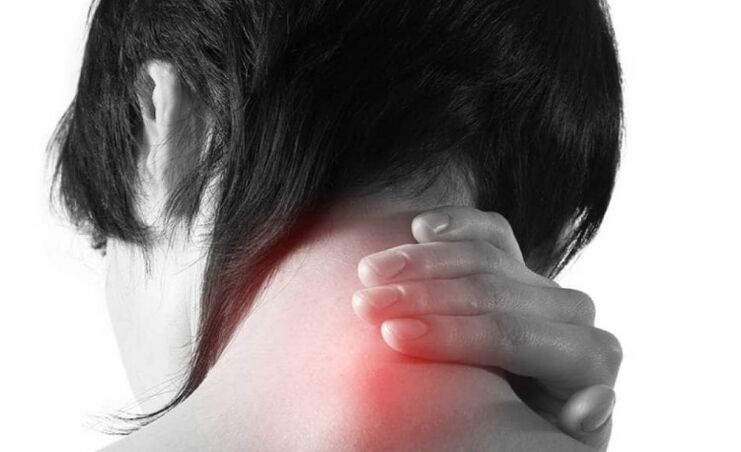
A variety of symptoms for cervical osteochondrosis is determined by different factors. Due to the abundance of symptoms, only a specialist can make a final diagnosis and recommend the correct therapy at home.
However, there are a number of signs that allow people to begin to suspect the presence of cervical osteochondrosis. These signs include:
- pain in the neck;
- strong enough and long -term headaches;
- dizziness, nausea, uncertain gait;
- a decrease in sensitivity in the shoulder girdle and in the hands;
- irritability, tearfulness, insomnia.
Treatment of cervical osteochondrosis of the house: recommendations and contraindications
Now more and more vertebrologists are recommending a combination of home treatment with medication.
The presence of osteochondrosis of the cervical spine involves its compulsory treatment, which should begin immediately after the diagnosis is made by a neuropathologist or vertebrologist.
Usually, drug treatment, massage courses, physiotherapy, acupuncture and a number of other forms of therapy are prescribed.
The specificity of cervical osteochondrosis makes it possible to combine the total prescribed therapy with treatment at home. Home treatment in no case does not exclude adopted therapeutic methods.
House treatment is necessary in order to:
- eliminate pain;
- improve metabolic processes in the defeat zone;
- strengthen the muscles of the shoulder girdle and neck;
- normalize sleep, eliminate negative feelings;
- Remember the blood supply to the brain.
Home treatment of cervical osteochondrosis, attractive in itself, allows you to largely facilitate the patient's life. It is very important that in order to achieve all these goals, it is completely optional to go somewhere, leaving the usual situation.
Usually, in the treatment of the house, they are prescribed:
- massage and self -massage;
- use of additional devices;
- folk remedies;
- special complexes of exercises;
- Home physiotherapy.
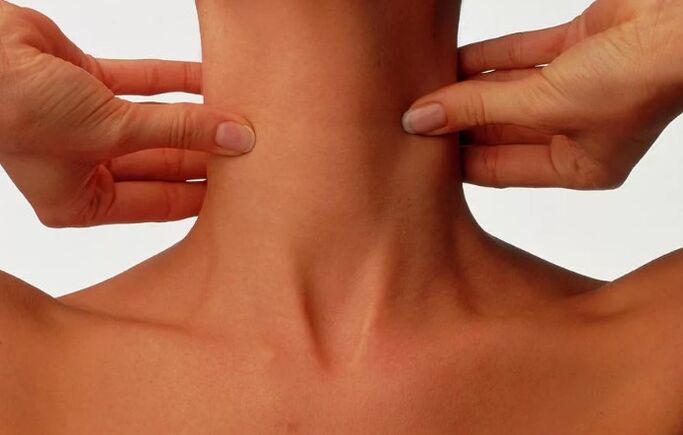
Massage and self -massage
The effectiveness of massage and self -massage at home very often exceeds the effectiveness of drug treatment for cervical osteochondrosis. Any mechanical manipulations allow the muscles of the neck and shoulder girdle to relax as much as possible.
As for pain, they are eliminated almost completely. Massage and self -massage lead to the fact that metabolic processes are enhanced in the cervical region, and the indicators of blood pressure also return to normal.
Only an experienced specialist can successfully carry out procedures, many of which work at home.
If it is not possible to pay for the services of a massage therapist, self -massage technique for osteochondrosis of the cervical spine comes to revenue.
Methods are quite simple, but very effective. There are several important rules that need to be followed.
Firstly, the massage should only be carried out with fingers. Secondly, movements are carried out strictly from the spine in the peripheral direction. Thirdly, it should be very easy to influence the affected area, without using strength. The movements should be very smooth.
Self -massage
Self -massage techniques are a warm -up, rubbing and stroking the occipital region, muscles of the posterior and side surface of the neck.
The process is carried out strictly in a sitting position, and it is necessary to throw the leg on the leg.
The elbow of the hand on the side of which this leg is placed on the requested leg.
Massage movements are carried out with the fingers of the other hand.
Physiotherapy at home
Physiotherapy at home is rarely carried out. However, in conjunction with general home and drug treatment, she proved her effectiveness for cervical osteochondrosis.
The main obstacle to patients who want to conduct physiotherapeutic procedures at home is the lack of the right equipment constantly at hand.
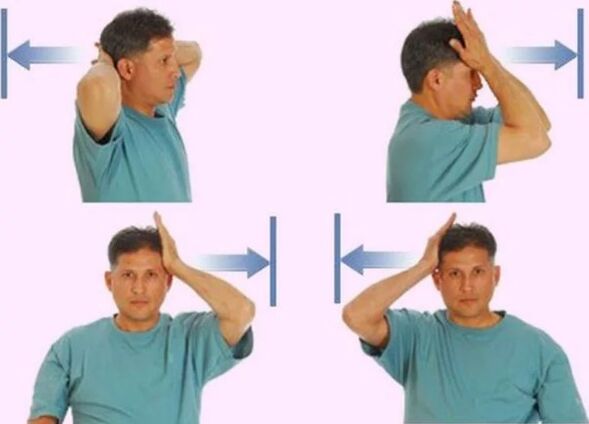
Many physiotherapists can come to the house to conduct procedures.
At home, ultraviolet is irradiated, vibrational influences, electrotherapy, shock-wave technique, internsham, as well as electrical neurostimulation, carried out directly through the skin.
Read more about physiotherapeutic procedures for cervical osteochondrosis here.
Many patients purchase equipment on their own.
But this is not recommended to do this, due to high prices, as well as due to the lack of the opportunity to carry out most procedures alone.
Moreover, there is not enough physiotherapy alone in order to completely get rid of osteochondrosis of the cervical region or from its symptoms.
Exercises against cervical osteochondrosis
Therapeutic physical education, or exercise therapy, is mandatory elements of the general therapy of osteochondrosis of the cervical spine.
Almost all exercises can be performed at home.
The basis of gymnastics is the circular movements of the head, the maximum approximation of the chin to the chest, throwing your head back towards the surface of the back.
Each dynamic exercise must be constantly alternated with relaxation and static muscle tension in the cervical region. This is carried out with the help of a palm in a sitting or lying position.
Therapeutic physical education at home implies the involvement of not only the cervical muscles, but also the muscles of the shoulders and arms in the physical activity. Circular joint movements allow to relieve pathological muscle tension.
It is very important that each exercise is performed very smoothly. It is very important not to rush. Each exercise should be repeated the recommended number of times - usually about five.
Exercises for cervical osteochondrosis
There are several exercises to prevent the further development of pathology, at the same time facilitating unpleasant symptoms. Most often, it is recommended to carry out the following four actions:
- It is necessary to sit on the table, holding your back very straight and evenly. The elbows are placed on the table, and the ear should be pressed to the palm of your hand. The head leans to the shoulder, and the hand as if counteracts it. In this position, the head is held for about ten seconds. The exercise is repeated, on average, ten times. The purpose of the execution is to strengthen the lateral cervical muscles. It is very important that the muscles are strengthened evenly. For this, the number of repetitions in each direction should be the same.
- You should sit at the table, holding your back straight. The hand is placed on the table with an elbow. The forehead must be covered on the elbow. It is necessary to rest your forehead into the palm of your hand and crush for ten seconds. You need to repeat the exercise up to ten times.
- You need to lie on the floor on the back. Within five to six seconds, the occipital part must be crushed on the floor. This strengthens the muscles and relieves nervous tension.
- This exercise is performed on the stomach. Unlike the previous one, the forehead is used here, which should be pressed on the floor for five to six seconds. This is an excellent muscle development exercise and joint strengthening.
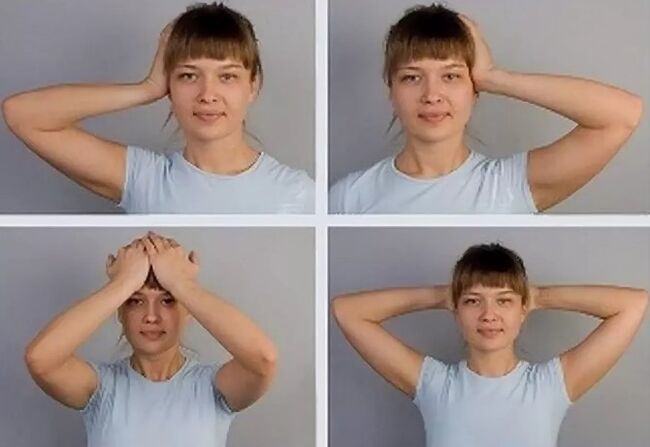
The listed exercises are the so -called gold standard. With home therapy, they are very simple, but extremely effective.















